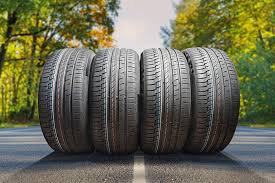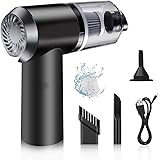Choosing the right tire size for your vehicle is essential for optimizing performance, comfort, and safety. In this blog, we will compare two very different tire sizes: 155/70 R13 and 225/60 R16. These two tire sizes cater to different types of vehicles and driving needs, so let’s dive into what sets them apart and when each would be the best option for your vehicle.
Decoding Tire Specifications
First, let’s break down what each number and letter in the tire size means:
- 155/70 R13:
- 155: The tire’s width in millimeters.
- 70: The aspect ratio, meaning the tire’s height is 70% of its width.
- R: Radial construction, which is the most common type of tire.
- 13: The diameter of the wheel (or rim) in inches.
- 225/60 R16:
- 225: The tire’s width in millimeters.
- 60: The aspect ratio, where the height is 60% of the tire’s width.
- R: Radial construction.
- 16: The diameter of the wheel (rim) in inches.
Tire Width (155 mm vs. 225 mm)
Tire width is an important factor when considering the grip, stability, and traction of the tire:
- 155/70 R13: The 155 mm width makes this a relatively narrow tire, which offers less surface area in contact with the road. Narrow tires like these are common in smaller cars, such as compact city cars, where fuel efficiency and easy handling are important. The narrow profile helps reduce rolling resistance, which improves fuel economy. These tires are best suited for everyday driving in urban environments where tight corners and narrow roads are common.
- 225/60 R16: In contrast, the 225 mm width is much wider, providing more contact with the road. This increases traction, especially on dry surfaces, making it ideal for larger vehicles like sedans, SUVs, and some performance vehicles. The wider tire enhances grip during cornering and provides better stability at higher speeds. It is particularly useful for vehicles that require more stability and handling, especially during long-distance driving or on highways.
Aspect Ratio (70 vs. 60)
The aspect ratio of a tire affects ride comfort and how much cushioning the tire can offer:
- 155/70 R13: With an aspect ratio of 70, this tire has a relatively tall sidewall, meaning more cushioning between the tire and the road. A taller sidewall helps absorb bumps and imperfections on the road, providing a smoother ride. This is why this tire size is often found on smaller, city cars where comfort and fuel economy are more important than high-speed performance.
- 225/60 R16: The 60 aspect ratio on the 225/60 R16 tire means the sidewall is shorter compared to the 155/70 R13. Shorter sidewalls offer better handling and stability, especially at higher speeds or when cornering, but they provide less cushioning. This makes the ride feel a bit firmer, especially on rougher roads. However, the improved handling makes these tires great for larger vehicles or cars that are driven on highways or for long distances.
Rim Diameter (13 inches vs. 16 inches)
The rim diameter also plays a role in how a tire performs and the overall feel of the ride:
- 155/70 R13: The 13-inch rim is quite small by today’s standards and is typically found on older or smaller vehicles. Smaller rims like these are lightweight, which contributes to better fuel efficiency and a softer ride. They’re ideal for smaller city cars, which don’t require large, heavy wheels.
- 225/60 R16: The 16-inch rim is larger, which means the tire will weigh more. Larger rims offer a sportier look and provide more responsive handling. The larger size also allows for bigger brake systems, improving stopping power. This is particularly useful for heavier vehicles like SUVs, crossovers, and some mid-sized sedans. Larger rims paired with lower-profile tires give a more aggressive, performance-focused look and feel, but the ride may be a little stiffer compared to smaller wheels.
Performance and Handling
- 155/70 R13: Tires in this size are designed for smaller, lightweight vehicles where comfort, ease of handling, and fuel economy are the primary considerations. They perform well at lower speeds and are ideal for city driving, where frequent stopping, starting, and maneuvering are common. However, they lack the stability and traction needed for high-speed driving or aggressive cornering. If your driving is mostly in urban areas and you value fuel economy, this size will suit you perfectly.
- 225/60 R16: With a wider width and lower aspect ratio, the 225/60 R16 tire provides better grip and handling, especially at higher speeds. It is a great choice for larger vehicles or those designed for highway driving. The increased contact with the road ensures better cornering and braking, which is especially important for heavier vehicles. However, these tires may be less fuel-efficient compared to narrower options due to higher rolling resistance.
Ride Comfort
- 155/70 R13: Thanks to its higher aspect ratio and smaller rim size, the 155/70 R13 tire delivers a comfortable and cushioned ride. The tall sidewalls help absorb road imperfections, making this tire size ideal for rough city streets or uneven surfaces. This tire size is well-suited for drivers who prioritize comfort over performance, especially in congested urban environments.
- 225/60 R16: While the 225/60 R16 offers better handling and performance, it doesn’t provide the same level of cushioning as the 155/70 R13. The shorter sidewalls and larger rim make the ride feel firmer, especially on bumpy or rough roads. However, for highway driving or long trips, the added stability and road grip outweigh the slightly reduced comfort. This tire size strikes a balance between performance and comfort, making it ideal for sedans, SUVs, and crossovers.
Fuel Efficiency
- 155/70 R13: Smaller tires like the 155/70 R13 are generally more fuel-efficient due to their narrower width and lighter weight. The reduced rolling resistance allows the vehicle to consume less fuel, making this tire size perfect for drivers who prioritize gas mileage. If you drive a smaller car primarily for city commutes, these tires will help maximize your fuel efficiency.
- 225/60 R16: Wider tires like the 225/60 R16 tend to have higher rolling resistance, which can negatively affect fuel economy. However, the trade-off is better traction, handling, and stability, which is especially important for larger or performance-oriented vehicles. If you drive a larger vehicle or spend a lot of time on highways, the slight reduction in fuel efficiency may be worth the improved control and safety.
Vehicle Compatibility
- 155/70 R13: This tire size is typically found on smaller vehicles like compact cars, older models, or city cars. The emphasis here is on fuel economy, maneuverability, and comfort. If you drive a small car that is primarily used for city driving or short distances, the 155/70 R13 tire is a good match for your needs.
- 225/60 R16: The 225/60 R16 tire is more common on mid-sized sedans, crossovers, and SUVs. It offers the stability, handling, and grip needed for larger vehicles, especially when driving at higher speeds or on highways. If you drive a heavier vehicle that requires more road contact and traction, this tire size will give you the performance you need.
Conclusion: Which Tire Size Should You Choose?
When comparing 155/70 R13 and 225/60 R16, the choice comes down to your vehicle type and driving style:
- 155/70 R13: This size is ideal for smaller, city-based vehicles where fuel efficiency, comfort, and maneuverability are key priorities. If you do a lot of city driving and want to maximize gas mileage while enjoying a smooth ride, this tire size is the right fit.
- 225/60 R16: If you drive a larger vehicle, such as an SUV, crossover, or mid-sized sedan, and prioritize handling, stability, and road grip, the 225/60 R16 tire size is the better choice. It offers superior performance at higher speeds and ensures your vehicle stays stable, even in challenging driving conditions.
Ultimately, both tire sizes have their advantages, and choosing the right one depends on the specific needs of your vehicle and your driving habits.
Recron Certified Dream Fibre Pillow (41X61, Fiber;Microfiber, White, Pack Of 2)
₹379.00 (as of 8 November, 2024 18:26 GMT +05:30 - More infoProduct prices and availability are accurate as of the date/time indicated and are subject to change. Any price and availability information displayed on [relevant Amazon Site(s), as applicable] at the time of purchase will apply to the purchase of this product.)SHAYONAM 3IN1 Portable Car Vacuum Cleaner with Blower | USB Rechargeable Wireless Handheld Car Vacuum Cleaner Traveling, Camping Reusable,Portable,Rechargeable (Vacuum with Blower)(Multy)/*-
₹699.00 (as of 8 November, 2024 18:25 GMT +05:30 - More infoProduct prices and availability are accurate as of the date/time indicated and are subject to change. Any price and availability information displayed on [relevant Amazon Site(s), as applicable] at the time of purchase will apply to the purchase of this product.)Gas Lighter for Kitchen Use | Rechargeable Electric Lighter | Diwali Lighter | Stove & Candle Lighter with USB Charging Port | 1 Year Warranty | 600 Uses in Single Charge
₹298.00 (as of 8 November, 2024 18:26 GMT +05:30 - More infoProduct prices and availability are accurate as of the date/time indicated and are subject to change. Any price and availability information displayed on [relevant Amazon Site(s), as applicable] at the time of purchase will apply to the purchase of this product.)Air Wick 250 ml - Lavender & Lotus, Freshmatic Automatic Air Freshener Refill | 2600 Sprays Guaranteed | Automatic Room Freshener, Bathroom Freshener and Room Spray
₹251.00 (as of 8 November, 2024 18:26 GMT +05:30 - More infoProduct prices and availability are accurate as of the date/time indicated and are subject to change. Any price and availability information displayed on [relevant Amazon Site(s), as applicable] at the time of purchase will apply to the purchase of this product.)BELOXY Projector Lights Ocean Wave, 3D Water Wave Effect LED Night Light, Crystal Table Lamp with Remote (Blue)
₹449.00 (as of 8 November, 2024 18:25 GMT +05:30 - More infoProduct prices and availability are accurate as of the date/time indicated and are subject to change. Any price and availability information displayed on [relevant Amazon Site(s), as applicable] at the time of purchase will apply to the purchase of this product.)Discover more from The General Post
Subscribe to get the latest posts sent to your email.





